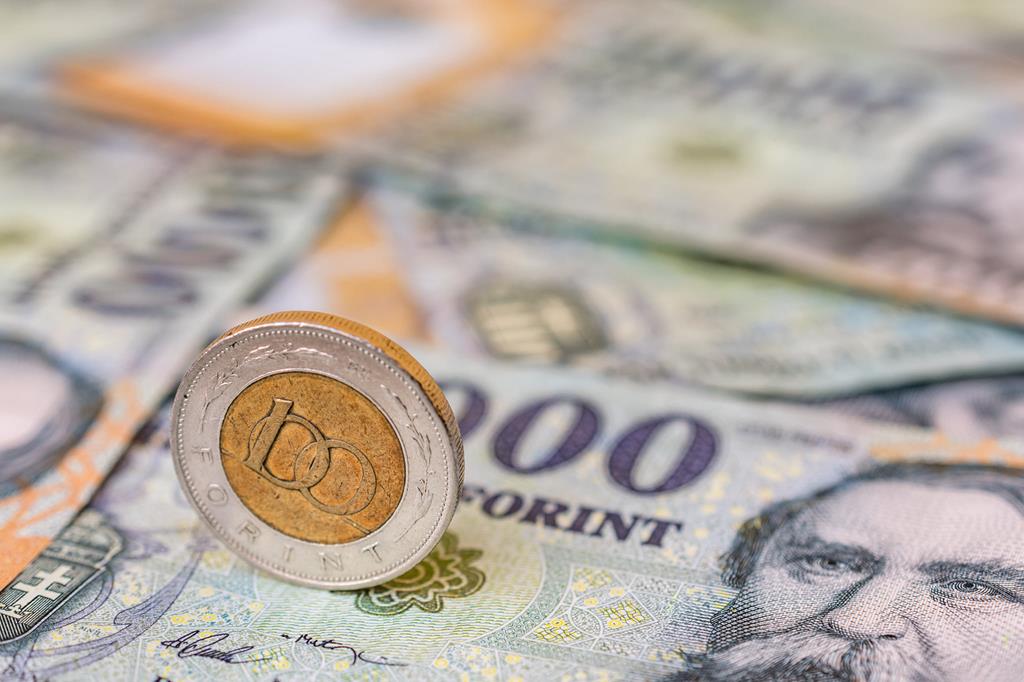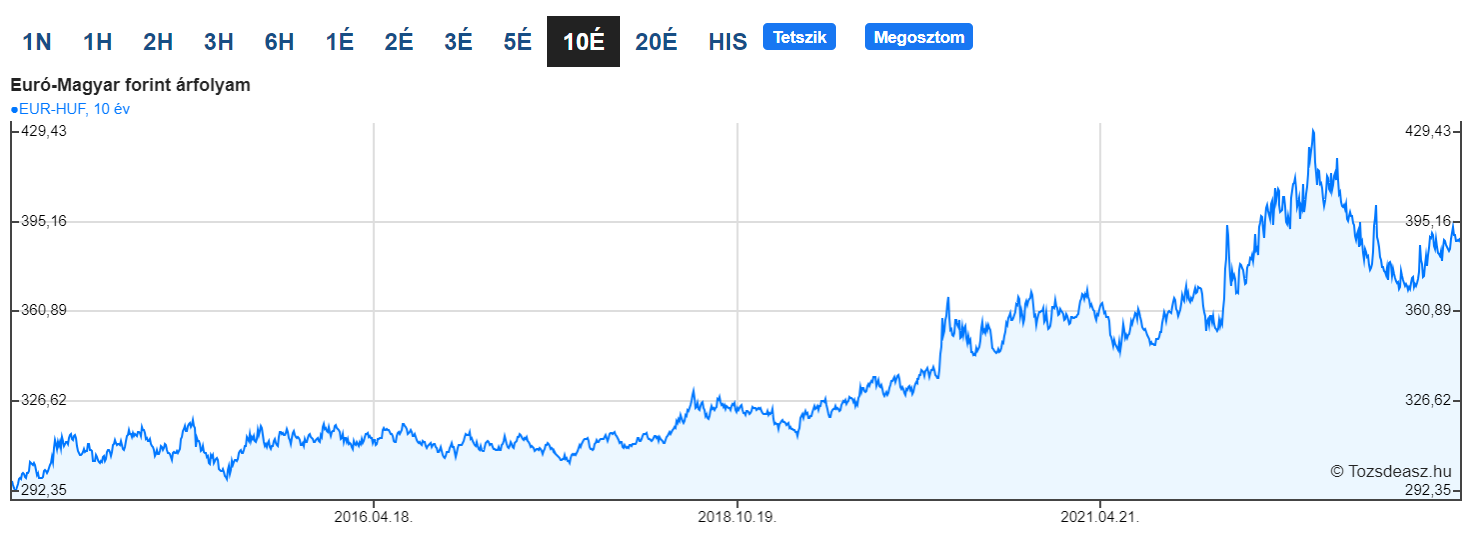Depressing: Hungarian forint loser of the past decade

The Hungarian forint is in a negative trend, and it has been for some time. Now, the currency seems to have been stagnant for the past few days. This gives experts a good time to examine how it has been behaving in the past compared to other independent EU currencies.
The forint exchange rate has been less volatile in recent days than in the past. Economx.hu found this a good time to look at how the domestic currency has performed over different time horizons against the remaining independent EU currencies.
The forint started its weakening trend six years ago. In principle, Hungary’s economy has already reached the level of development where a sustained weakening of the currency is unjustified. In the short term, the currency may be subject to shocks (like the gas price explosion last year) but the earlier weakening has magnified this effect, the economic news portal writes.
The forint is the weakest among the regional currencies
Of the 27 current members of the European Union, 20 are already in the euro area. Apart from Hungary, Sweden, Denmark, Bulgaria, Romania, Poland and the Czech Republic still use their own currencies. Economx looked at the performance of the currencies over 10 years.
The forint was trading between 285-290 against the euro at this time 10 years ago. Now, the exchange rate is 388. This represents a depreciation of 35% over the period (it is important to note that the exchange rate remained stable within a range from the beginning of 2014 until spring 2018). However, the depreciation was already strong in 2019, even though there was no crisis at that time.

Currencies of the region
10 years ago, the Polish zloty was 4.20 to the euro, now it is 4.53. This represents a depreciation of 8%. The Czech koruna has strengthened: while 10 years ago, it was 25.7 to the euro, it is now 24.7: a 4% appreciation. The Romanian leu was 4.35 against the euro 10 years ago and is now 4.96. That represents a total depreciation of 14%. This happened almost entirely between 2017 and 2021, as before and after the exchange rate was stable.
Thus, if we compare the currencies, the forint is by far the worst performer, with a 35% weakening. The biggest drawback of the strong forint depreciation is that it has also devalued domestic wages. Presumably, without the strong depreciation, inflation would have remained much lower over the past two years, Economx concludes.
Read also:
- EU’s ultimatum to PM Orbán: no political deal behind closed doors
- New US sanctions on the horizon: possible impact on travel
Source:


Question: who has been in charge the past 10 plus years?
As our Politicians like to remind us, they have been running the show, chosen by the Hungarian people, since 2010. Nothing but excuses, always something or someone else. There appears to be a pattern?